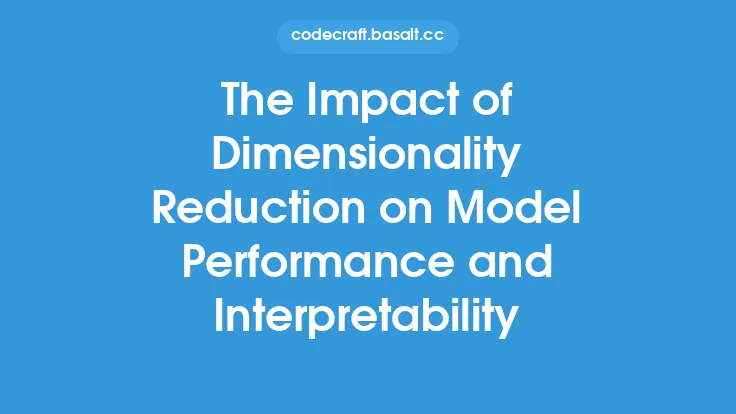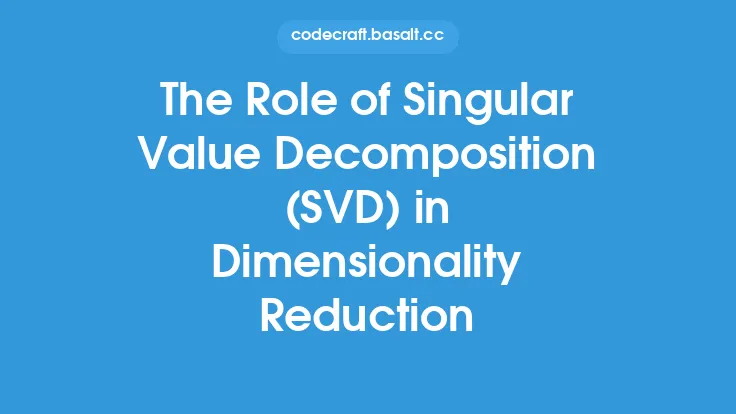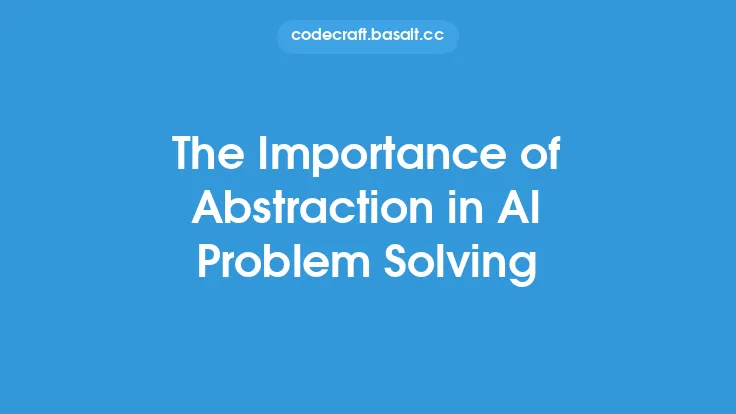Dimensionality reduction is a crucial step in the machine learning pipeline, particularly when dealing with high-dimensional data. High-dimensional data refers to datasets that have a large number of features or variables, which can lead to the curse of dimensionality. The curse of dimensionality is a phenomenon where the volume of the data space increases exponentially with the number of dimensions, making it difficult to analyze and model the data. Dimensionality reduction techniques aim to reduce the number of features in a dataset while preserving the most important information, thereby mitigating the effects of the curse of dimensionality.
What is Dimensionality Reduction?
Dimensionality reduction is a process of transforming high-dimensional data into a lower-dimensional representation, where the lower-dimensional representation retains the most important characteristics of the original data. The goal of dimensionality reduction is to identify the most informative features in the data and eliminate the redundant or irrelevant features. This is achieved through various techniques, including feature selection, feature extraction, and feature transformation. Feature selection involves selecting a subset of the most relevant features from the original dataset, while feature extraction involves transforming the original features into a new set of features that are more informative. Feature transformation involves transforming the original features into a new set of features that are more suitable for modeling.
Benefits of Dimensionality Reduction
Dimensionality reduction has several benefits, including improved model performance, reduced computational complexity, and enhanced data interpretability. By reducing the number of features in a dataset, dimensionality reduction can help to prevent overfitting, which occurs when a model is too complex and fits the noise in the training data rather than the underlying patterns. Overfitting can result in poor model performance on unseen data, and dimensionality reduction can help to mitigate this problem. Additionally, dimensionality reduction can reduce the computational complexity of modeling high-dimensional data, making it possible to analyze and model large datasets that would otherwise be intractable. Finally, dimensionality reduction can enhance data interpretability by identifying the most important features in the data and eliminating the redundant or irrelevant features.
Types of Dimensionality Reduction
There are several types of dimensionality reduction techniques, including linear and non-linear techniques. Linear techniques, such as principal component analysis (PCA) and singular value decomposition (SVD), assume that the data lies on a linear subspace and aim to find the best linear approximation of the data. Non-linear techniques, such as t-distributed Stochastic Neighbor Embedding (t-SNE) and autoencoders, assume that the data lies on a non-linear manifold and aim to find the best non-linear approximation of the data. Linear techniques are generally faster and more efficient than non-linear techniques but may not capture non-linear relationships in the data. Non-linear techniques, on the other hand, can capture non-linear relationships in the data but may be computationally expensive and require careful tuning of hyperparameters.
Evaluating Dimensionality Reduction Techniques
Evaluating dimensionality reduction techniques is crucial to ensure that the reduced representation of the data retains the most important characteristics of the original data. There are several metrics that can be used to evaluate dimensionality reduction techniques, including reconstruction error, classification accuracy, and clustering quality. Reconstruction error measures the difference between the original data and the reduced representation of the data, while classification accuracy measures the ability of the reduced representation to predict the class labels of the data. Clustering quality measures the ability of the reduced representation to preserve the clustering structure of the data. Additionally, visual inspection of the reduced representation can provide valuable insights into the quality of the dimensionality reduction technique.
Real-World Applications of Dimensionality Reduction
Dimensionality reduction has numerous real-world applications, including image compression, text classification, and gene expression analysis. In image compression, dimensionality reduction can be used to reduce the number of pixels in an image while preserving the most important features of the image. In text classification, dimensionality reduction can be used to reduce the number of features in a text document while preserving the most important characteristics of the document. In gene expression analysis, dimensionality reduction can be used to reduce the number of genes in a dataset while preserving the most important patterns of gene expression. Additionally, dimensionality reduction can be used in recommender systems, anomaly detection, and time series analysis, among other applications.
Challenges and Limitations of Dimensionality Reduction
Despite the numerous benefits of dimensionality reduction, there are several challenges and limitations to consider. One of the main challenges is the choice of dimensionality reduction technique, as different techniques may be suited to different types of data and applications. Additionally, dimensionality reduction can result in loss of information, particularly if the reduced representation is too low-dimensional. Furthermore, dimensionality reduction can be sensitive to hyperparameters, such as the number of components or the learning rate, which can require careful tuning. Finally, dimensionality reduction can be computationally expensive, particularly for large datasets, which can require significant computational resources.
Future Directions of Dimensionality Reduction
The field of dimensionality reduction is rapidly evolving, with new techniques and applications emerging continuously. One of the future directions of dimensionality reduction is the development of techniques that can handle non-linear relationships in the data, such as deep learning-based techniques. Another future direction is the development of techniques that can handle large-scale datasets, such as distributed and parallel computing-based techniques. Additionally, there is a growing interest in developing techniques that can preserve the interpretability of the data, such as techniques that can provide feature importance scores or visualizations of the reduced representation. Finally, there is a growing interest in developing techniques that can handle multi-modal data, such as techniques that can integrate multiple types of data, such as text, images, and audio.





